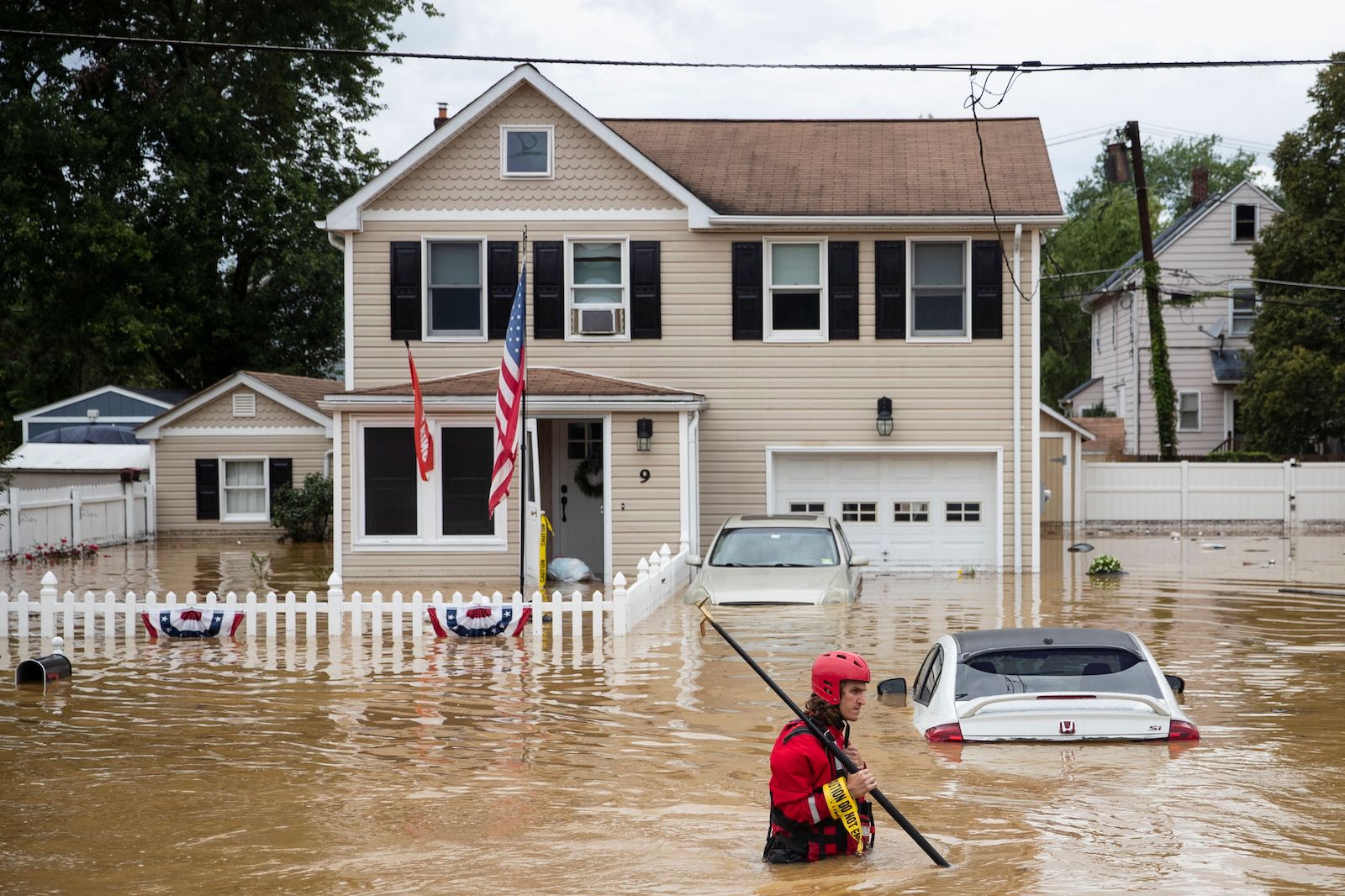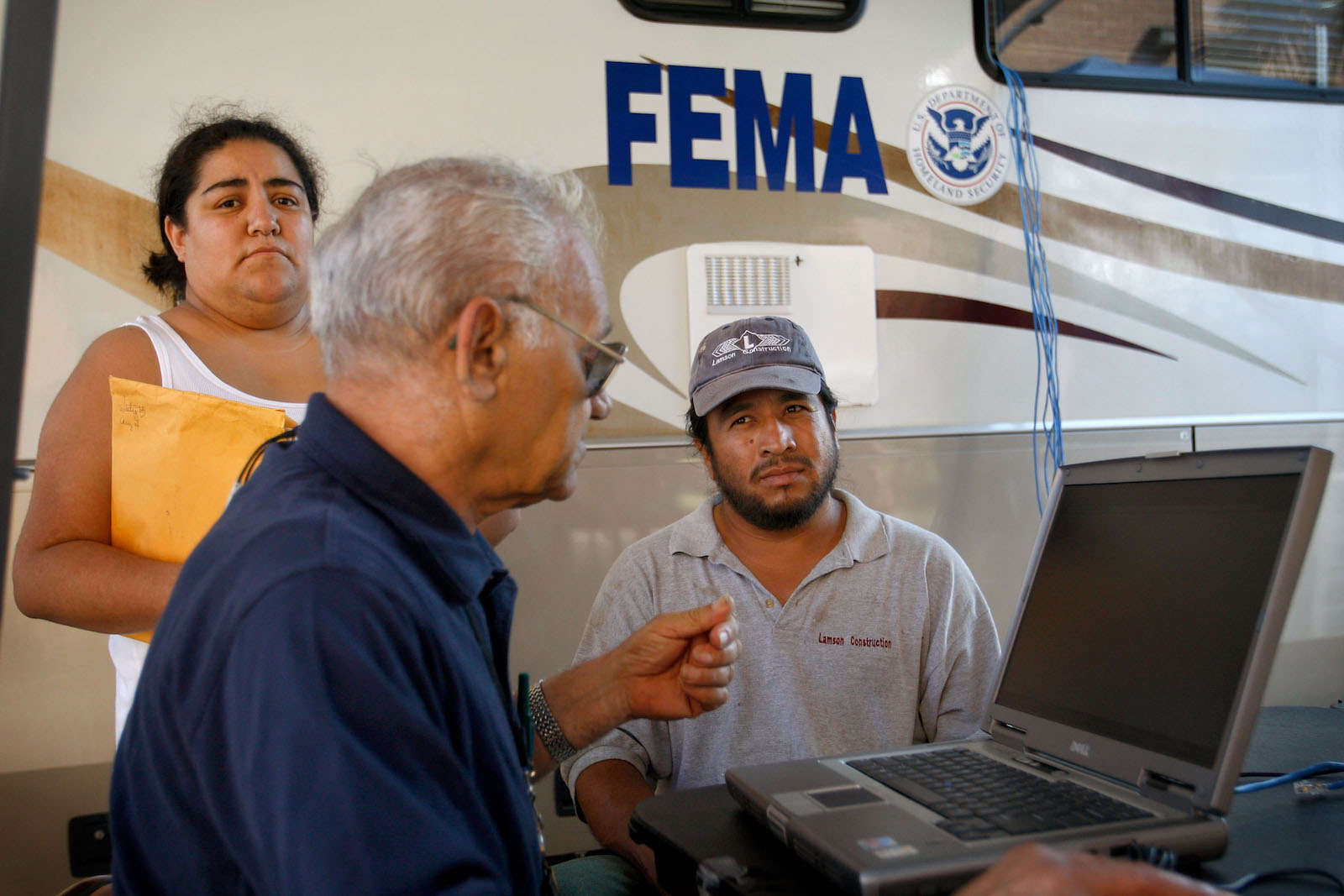In the wake of hurricanes, floods, and other disaster events, most Americans know that you can apply for aid from the Federal Emergency Management Agency, known as FEMA. What they don’t know is that since 2002, nearly half of those applicants were turned down.
Since that year, some 15 million households applied for support through the agency’s Individual Assistance Division; roughly 7.5 million households were denied help, according to an E&E news analysis. Journalists and watchdog groups have been offered little insight into why. Demographic information, such as race, ethnicity, sex, tribal membership, marital status, and education level, has been nonexistent, making it impossible to track the federal agency’s equity priorities and to screen for discrimination.
That could change.
Recently, the agency made the move to request authority from the Office of Management and Budget, or OMB, to begin asking people to provide such demographic information as they’re applying for FEMA aid, as first reported by E&E News and confirmed to Grist by a FEMA official. The move will allow government watchdogs and the federal agency to determine if there is discrimination in how the group distributes such funds. FEMA has distributed roughly $26 billion through its Individual Assistance Division since 2002.
However, the demographic details will not be used to determine if an applicant is eligible for disaster aid, the FEMA official said.
Historically, the official said, the agency was barred from collecting demographic data because it was not used to determine eligibility, which is why the agency requires approval first from the OMB to update the application process.

The move, which comes on the heels of years of organizing by disaster recovery and housing nonprofits, comes as the agency’s aid distribution amounts are expected to rise with climate change continuing to fuel more severe weather events and climate-induced displacement. In 2021, there were at least 18 disasters with more than $1 billion in damages, up 300 percent from the early 2000s. The data will help to confirm any inequities in whom disasters affect and which demographics are more likely to face disasters.
“Systematic barriers can make disaster recovery more difficult for historically disadvantaged or underserved people,” the FEMA spokesperson told Grist. “Collecting this information during the application process will allow FEMA to better evaluate, identify and remedy inequity-related issues within disaster assistance programs.”
Using broad demographic data from the census, advocacy groups have found patterns of discrimination, but household level data would definitively prove it. In a national poll released this week by the nonprofit political organizing group Black to the Future Action Fund, 46 percent of Black respondents experienced severe weather events this summer. In comparison, an analysis by the Washington Post found that 32 percent of all Americans experienced weather disasters this summer.
Diane Yentel, president and CEO of the National Low Income Housing Coalition is expected to testify about inequalities in disaster recovery to the United States Commission on Civil Rights on December 10, the first time in U.S. history that the commission has probed FEMA or the results of a disaster recovery plan.
Yentel shared her testimony in advance with Grist, including “Black and brown communities are often located in areas at higher risk of disaster and have less resilient infrastructure to protect residents from harm. Long-term recovery resources tend to go to white communities that face lower risks.”
She is expected to testify that rather than dismantling racial segregation, FEMA’s aid and other federal rebuilding efforts “tend to entrench racial disparities.”

FEMA contends that an applicant’s demographic data is never a reason for rejection. Typically, FEMA says, the biggest reasons for rejections are that people can’t prove their residency or that applicants’ homes faced pre-existing damage not caused by a disaster. Yentel and other advocates contend rejections disproportionately affect renters, people facing housing insecurity, undocumented immigrants, and people with disabilities.
While natural disasters may uproot families and their homes, landlords have used hurricanes, floods, and other wild weather events as an opportunity to kick renters out. After Hurricane Katrina, for example, thousands of low-income renters in Louisiana and Mississippi faced mass evictions and illegal price gouging, which dwindled their chances of receiving FEMA aid.
FEMA’s criteria for receiving aid, Yentel says, leaves many low-income survivors, who tend to be people of color, “at increased risk of displacement, eviction, and, in worst cases, homelessness.” A 2018 study by Rice University found that white people who live in counties that faced disaster damage and FEMA support actually saw their personal wealth rise following the disaster while Black residents lost wealth.
So while the disparities are more than apparent, more centralized data collection might move the needle in addressing them. The next step, advocates contend, is making sure FEMA makes the data publicly available. FEMA has not said if the demographic information will be publicly available or when data collection protocols might be approved.
As climate disasters become a regular component of American life, Yentel said, “Our country must develop a new disaster housing recovery system that centers the housing needs of the lowest-income and most marginalized survivors.”



